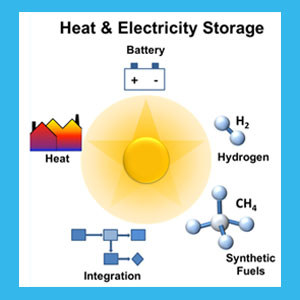Speaker
Dr
Emiliana Fabbri
(Paul Scherrer Institut)
Description
Perovskites have recently shown the potentials of relatively high electrocatalytic activity towards oxygen reduction reaction (ORR)and oxygen evolution reaction (OER) in alkaline media.[1] Therefore they can represent potential low cost cathode and anode materials for low temperature alkaline fuel cell and electrolyzers, respectively.
The basic perovskite oxide structure can be represented as ABO3, where A is the larger cation, such as a rare earth or an alkaline earth element, and B is the smaller cation, generally a transition metal. The ABO3 structure can accommodate cation substitution in a wide range by partial substitution of either the A and the B-site cation with another element giving (AxA`1-x)(ByB`1-y)O3 compositions. Such substitution leads to modification of the perovskite band structure which in turn modifies the electrical, optical and magnetic properties of the oxides, and, thus, may also have a significant effect on their electrocatalytic activity.
Generally, the perovskite electronic properties are considered to be determined mostly by the B-site cation. When the B-site cation is a transition metal, the major contribution to the material physical properties derives from the B-site cation d-band electrons; for this reason perovskites having B-site transition metals are generally regarded as d-band perovskites. However, the A-site cation can also play an important role in the physicochemical properties of d-band perovskites. Its size determines whatever the crystal structure is deviated from the ideal cubic form and doping the A-site with an aliovalent element can lead to the formation of oxygen vacancies or electron holes.
In the present work we have investigated the activity towards ORR and OER of Ba0.5Sr0.5Co0.2Fe0.8O3-d (BSCF)perovskite as single material electrode and as composite electrode coupling BSCF with functionalized acetylene black carbon. The rotating disk electrode (RDE) measurements showed that the composite electrode presents a lower overpotential towards both the ORR and the OER compared to BSCF and acetylene black single material electrodes, clearly pointing towards a synergistic effect between BSCF and acetylene black. X-ray absorption spectroscopy was used to unravel a possible electronic interaction between BSCF and acetylene black responsible for the superior electrochemical activity of the composite electrode.
Author
Dr
Emiliana Fabbri
(Paul Scherrer Institut)
Co-authors
Prof.
Maarten Nachtegaal
(Paul Scherrer Institut)
Thomas J. Schmidt
(Paul Scherrer Institut)
Dr
Xi Cheng
(Paul Scherrer Institut)

